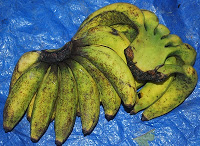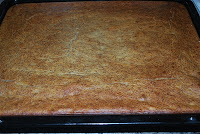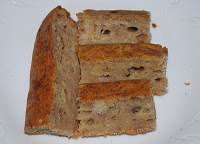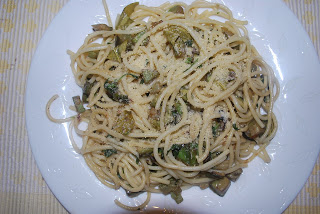After the Durian Fest, I was left with about 20 durians which either needed to be eaten within one day or processed to a form for future consumption. Since the durians were really creamy and sweet and since I am not a fan of tempoyak, I decided to cook them and turn them into lempok durian. The process is simple but definitely time consuming.
My version of lempok was just to cook the flesh until it turned from creamy yellow to caramel in color with a rather thick consistency, similar to dodol. It takes over an hour and needs to be frequently stirred or it will burn. One thing for sure, both my arms got a good workout as the durian will become thicker and thicker, requiring more and more effort to stir it. Once done, after cooling it, I packed them into plastic bags and placed them in the chiller for storage.
Now that I have got this great lempok durian kampong, I decided to experiment. Most of us have eaten bread puddings with raisins or similar so I decided to experiment with making lempok durian bread pudding.
This is definitely one of the easiest recipes for me. What matters is the quality of the ingredients.
Ingredients:
- Sliced bread
- Lempok durian
- Fresh coconut milk
- Water
Method:

Dissolve the lempok durian in coconut milk and water over medium heat. Stir constantly to ensure smooth mixture. I use equal parts of water and coconut milk.
Lightly oil a pan. Tear the slices of bread into pieces and start layering the pan, alternating between bread and lempok mixture.

Heat over to 180F and bake for 45 minutes.
Can be served warm or room temperature and with misai kucing tea – tastes great!
Notes:
Due to the sweetness of the durian, no sugar was needed for the lempok or in making the pudding.
Happy trying and hope you like it 🙂
 Dissolve the lempok durian in coconut milk and water over medium heat. Stir constantly to ensure smooth mixture. I use equal parts of water and coconut milk.
Dissolve the lempok durian in coconut milk and water over medium heat. Stir constantly to ensure smooth mixture. I use equal parts of water and coconut milk.










